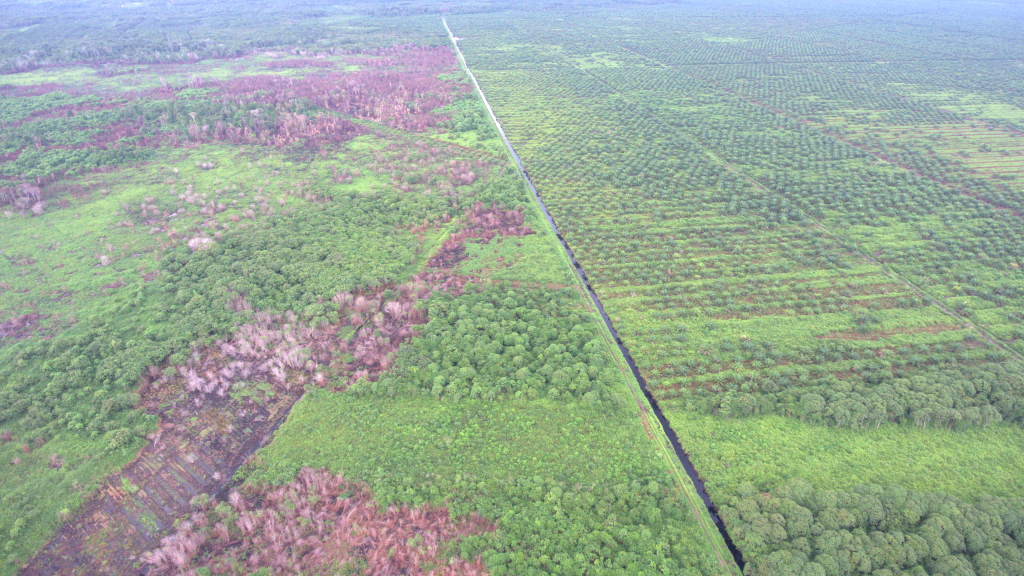Jakarta, July 12, 2024 – The Indonesian House of Representatives (DPR RI) and the Government of Indonesia have agreed to pass amendments to Law No. 5 of 1990 about Conservation of Biological Resources and Ecosystems. Despite hopes for a comprehensive and sustainable update, unfortunately, the changes made have introduced several new problems.
The change in concept from a replacement law to an amendment law, and the content of the Draft Law on Conservation of Biological Resources and Ecosystems (RUU KSDAHE), have not yet been able to accommodate community interests nor address the challenges in the implementation of conservation of biological resources and ecosystems.
With the enactment of the RUU KSDAHE into law, it reinforces the administration of wildlife conservation in Indonesia, which still heavily emphasizes an outdated paradigm, namely the three pillars of conservation: utilization, preservation, and protection. However, it is important to recognize the reality and the situation on the ground, where besides the State, communities, as well as indigenous communities, possess knowledge, wisdom, and capabilities in conserving biological resources and ecosystems. The focus of conservation efforts should be inclusive, acknowledging and respecting indigenous communities as key players in conservation.
During the RUU KSDAHE deliberation process, several critical aspects were highlighted by civil society groups. One such critical aspect is the neglect of meaningful participation principles and closed discussions by the RUU KSDAHE Working Committee during the problem inventory list (DIM) meeting process. Not only problematic in the regulatory formation process, but the RUU KSDAHE is also deemed problematic in substance.

Executive Director of Satya Bumi, Andi Muttaqien, mentioned that Indonesia, as a country that agreed to the Convention on Biological Diversity at the COP 15 (CBD COP-15) conference in Montreal in 2022, should have used this momentum to incorporate strong commitments to biodiversity protection in the RUU KSDAHE.
One of the agreements reached at the conference was to halt and restore biodiversity loss by 2030. Therefore, measurable and specific targets must be established in each terms.
“There is a shift in conservation paradigms outlined in this convention. One of them is the role of indigenous communities in biodiversity protection, which is very clearly mentioned there. Indigenous communities possess local knowledge and play a crucial role in preserving nature and biodiversity. Involve them meaningfully, from planning to implementation,” explained Andi.
Muhamad Satria Putra, legal coordinator and advocate for Garda Animalia, stated that with the shift to the concept of amendment law, the phrases “protected” and “not protected” still apply, thereby maintaining the weaknesses of Law No. 5 of 1990. “These phrases threaten the survival of plant and animal species that are not protected in the wild. Because they are not protected, hunting and trading of these plants and wildlife will continue to thrive, so that it can potentially endanger their populations in the wild.”
Referring to the DIM of the RUU KSDAHE, the reason for maintaining the phrases “protected” and “not protected” is based on wild population conditions, protection aspects, and simplicity in enforcement and implementation.

“The problem is that we do not have precise data regarding the population of plant and animal species in Indonesia. There are even wildlife species classified as ‘not protected,’ but according to the International Union for Conservation of Nature (IUCN), they are listed as endangered on the red list.” Furthermore, Satria explained that the implications of “protected” and “not protected” phrases affect law enforcement. “So far, law enforcement against wildlife crimes has been perceived as inadequate, failing to deter offenders. This is because Judges typically only refer to protected wildlife. However, not all wildlife species have the same valuation. Therefore, the RUU KSDAHE should be able to accommodate the categorization of wildlife protection based on the level of extinction risk, the difficulty of rehabilitation, and other aspects,” he concluded.
Ayut Enggeliah, from the Sawit Watch Association, stated, “In regulating the function of Preservation Areas, including buffer areas within conservation areas, wildlife corridors, areas with high conservation value, community-managed conservation areas, and regions protecting local wisdom, it is stated that those who hold rights/permits may manage them. However, according to the terms, land rights holders in Preservation Areas must contribute to the conservation effort activities on their land. Otherwise, their land rights will be revoked. In another term, the RUU KSDAHE also mentions customary forests as part of these areas, although customary forests are not solely for conservation purposes. Clearly, this term is dangerous as it indicates the potential for centralized state regulation so that conflicts between indigenous communities and national parks might keep reoccurring.”

Forest Watch Indonesia Campaign Manager, Anggi Putra Prayoga, asserted that the public requires legislation of quality that can address environmental issues and future climate crises. FWI data indicates that 90% of damage to natural resources such as forests and other vital ecosystems occurs outside conservation areas. The public awaits the emergence of policies that can protect natural resources from exploitation schemes to ensure better environmental quality rights.
Furthermore, in this legislation that regulates the conservation of biological resources and ecosystems, there is no discussion, regulation, or even mention of the diverse types of ecosystems found within Indonesia. Ecosystems such as mangroves, peatlands, and karst ecosystems are not mentioned at all in this law, let alone regulated, to address the ongoing challenges posed by development that continually erodes these wetland ecosystems.
“The regulation of preservation areas will not be able to address the real challenges of conservation of biological resources and ecosystems. Firstly, preservation poses a policy trap for regional governments, despite responsibilities for Protected Forest Areas and Production Forest Areas, including Other Land Use Areas (APL) under Law No. 23 of 2014 under Provincial Governments, whereas 14.2 million hectares of natural resources are actually within concessions (mining, plantations, forestry) under the Ministry. Secondly, there is no mention at all of the regulations regarding the protection status and management of each ecosystem type in Indonesia. Thirdly, preservation areas cannot be equated with essential ecosystem areas and Other Effective Area-Based Conservation Measures (OECM), as they do not recognize collaborative management as a key to successful and inclusive conservation.”
CIVIL SOCIETY CORRESPONDENCE
Forest Watch Indonesia : Anggi Prayoga (+62 857-2034-6154)
Garda Animalia : Satriya (+62 896-9437-0612)
Satya Bumi : Andi Muttaqien (+62 812-1996-984)
Sawit Watch : Ayut (+62 812-3407-5917)
Trend Asia : Amalya Reza Oktaviani (+62 896-5447-1045)
Auriga Nusantara : Roni (+62 811-6678-033)
Indonesia Parliamentary Center : Arif Adiputro (+62 856-9372-0839)
The Press Release document can be downloaded at the link below:



